Enchanted Escapes: Crafting Fairy Gardens to Transform Your Front or Backyard
Just imagine stepping into your garden and feeling as though you’ve wandered into a storybook realm where fairies dwell and magic is tangible. With a sprinkle of creativity and a dash of whimsy, you can transform ordinary outdoor spaces into enchanting fairy gardens that captivate the imagination.
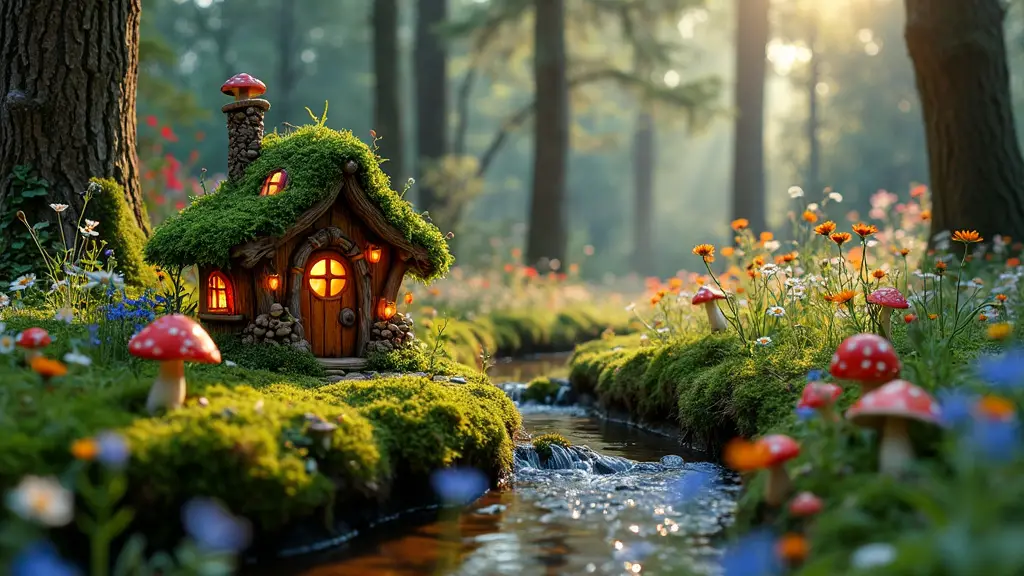
The allure of fairy gardens lies in their ability to bring a touch of enchantment to our daily surroundings. These miniature landscapes create pockets of magic, inviting us to pause and appreciate the smaller details in life. Rooted in folklore and tradition, the concept of fairy gardens has captured hearts across generations.
In many cultures, stories of fairies and mystical creatures have been passed down through centuries. Gardens have often been considered a bridge between the human world and the realm of the supernatural. By creating a fairy garden, we tap into this rich heritage, blending mythology with modern aesthetics.
In recent years, fairy gardens have become a significant trend in garden design. As people seek more personalized and experiential outdoor spaces, these tiny realms offer a perfect blend of creativity and nature. They allow individuals to craft unique environments that reflect their personalities and bring joy to both creators and visitors alike.
Selecting the Perfect Location
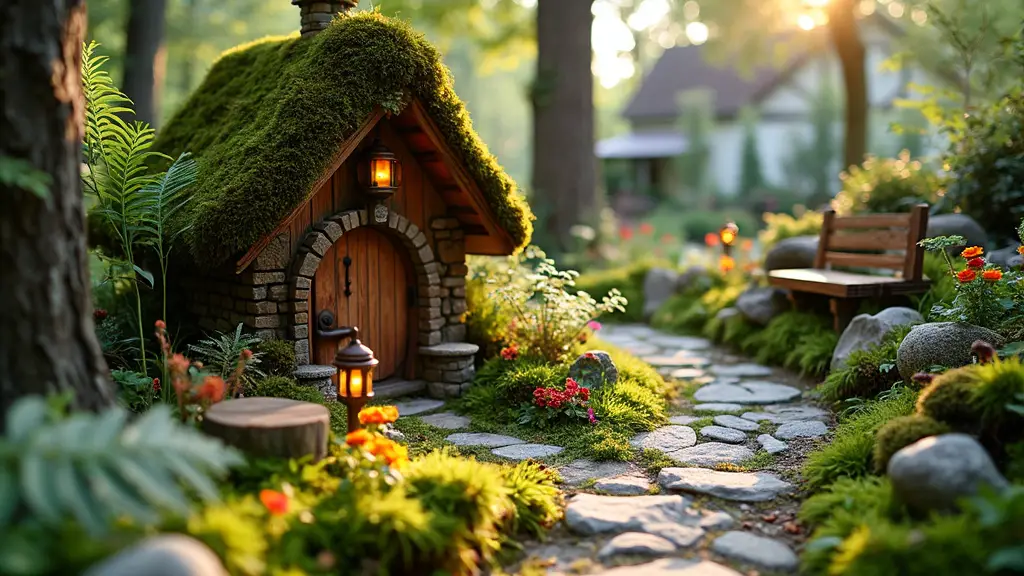
Front Yard vs. Backyard
Choosing the right spot for your fairy garden is essential. Placing it in the front yard can enhance curb appeal, offering a delightful surprise to passersby. It becomes a conversation starter and adds character to your home’s exterior. A well-designed fairy garden can make your house stand out in the neighborhood, showcasing your creativity and attention to detail.
On the other hand, situating your fairy garden in the backyard provides a private sanctuary. It becomes a personal retreat where you can enjoy the magical atmosphere away from the public eye. This setting allows for more extensive designs, as you might feel more comfortable experimenting without the pressure of public display. It also creates a special place for family gatherings, where children and adults alike can explore and play.
Consider the amount of sunlight and shade in potential locations. Most fairy garden plants prefer partial shade, so areas under trees or near larger shrubs can be ideal. Also, think about accessibility. Placing the garden near a pathway or patio makes it easier to admire and maintain.
Maximizing Space in Small and Large Gardens
Limited space doesn’t have to hinder your fairy garden dreams. Container gardening is an excellent solution for small areas. Using pots, window boxes, or even old wheelbarrows, you can create compact fairy gardens that fit on balconies, patios, or small yards. Vertical gardening techniques, such as using stacked planters or wall-mounted displays, can create stunning effects in confined spaces. Hanging fairy gardens are another innovative idea, utilizing macramé hangers or decorative brackets.
For those with expansive yards, integrating fairy gardens into existing landscapes adds layers of interest. Consider dedicating a corner of the garden or weaving miniature scenes throughout the space to create a cohesive magical theme. You might create a series of fairy villages connected by winding paths, each with its own unique style and features. Incorporating fairy elements into flower beds or around trees can make the entire garden feel enchanted.
When planning the location, also think about the garden’s interaction with natural elements. Positioning your fairy garden near water features like ponds or streams can enhance the mystical atmosphere. The reflection of miniature structures in the water adds depth and intrigue.
Designing Your Fairy Garden

Choosing a Theme
Selecting a theme sets the foundation for your fairy garden’s design. Popular choices include woodland retreats filled with moss and rustic elements, or mystical meadows adorned with colorful flowers and delicate accents. A beach-themed fairy garden might feature tiny seashells, sand, and miniature beach chairs. Desert fairy gardens can incorporate succulents and cacti for a unique twist.
Seasonal themes offer the opportunity to refresh your garden throughout the year, incorporating festive touches during holidays like Halloween or Christmas. For example, a Halloween fairy garden might include miniature pumpkins, cobwebs, and friendly ghosts, while a Christmas-themed garden could feature tiny evergreens, snow-covered houses, and sparkling lights.
Themed gardens can also reflect personal interests or hobbies. A fairy tea party theme might include tiny tables set with miniature tea sets, while a fairy farm could feature small animals and barns. By choosing a theme that resonates with you, the garden becomes a personal expression of your creativity.
Planning the Layout

A well-thought-out layout brings your fairy garden to life. Begin by sketching a simple plan, outlining where pathways, focal points, and hidden nooks will go. Consider the flow of the garden, guiding the eye from one feature to the next. Incorporate elements like tiny bridges, arches, or ponds to add depth. Using levels and terraces can create a dynamic landscape, making the garden more engaging.
Balancing open spaces with detailed areas ensures that the garden feels inviting without becoming cluttered. Too many elements can overwhelm the senses, so it’s essential to leave some areas simple to highlight focal points. Think about the perspective from which the garden will be viewed. If it’s primarily seen from one angle, arrange the most intricate details in that sightline.
Including interactive elements, such as movable accessories or hidden surprises, can make the garden more engaging, especially for children. A tiny door at the base of a tree or a miniature mailbox invites visitors to imagine the fairies’ daily lives.
Selecting Plants and Materials
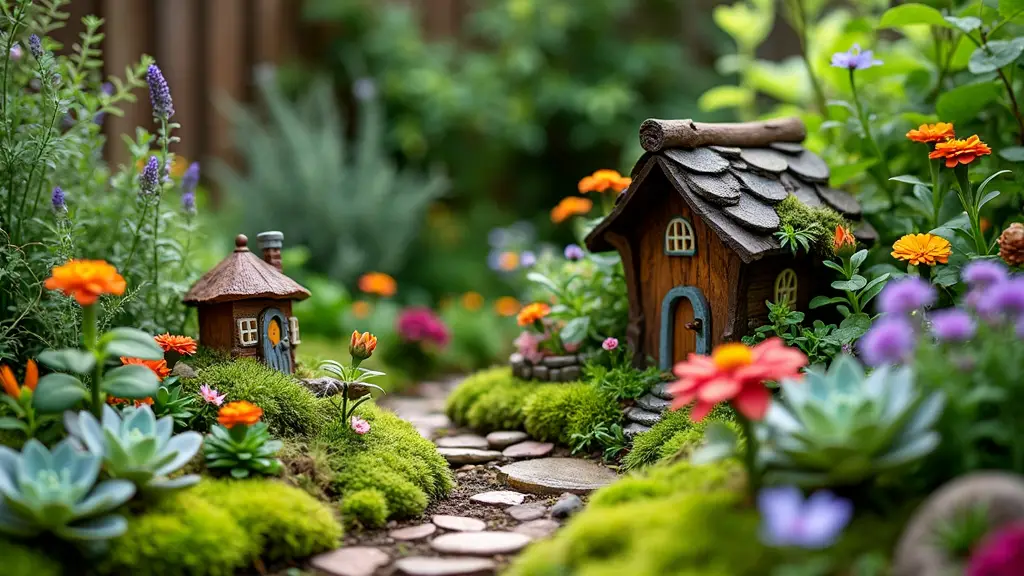
Ideal Plant Choices
Choosing the right plants is crucial for creating a lush and inviting fairy garden. Miniature plants like dwarf conifers, baby tears, and small-leafed ivies provide scale and texture. Mosses add a touch of enchantment, covering the ground with a soft, green carpet. Succulents are excellent for low-maintenance gardens, offering unique shapes and colors. Herbs like thyme, oregano, and rosemary not only fit the scale but also release pleasant scents when touched.
Incorporating plants that attract butterflies and birds enhances the magical atmosphere. Flowers like lavender, marigolds, and daisies not only add color but also invite wildlife to your garden, making it a lively and dynamic space. Native plants are often more resilient and require less maintenance, adapting well to local conditions.
Consider the growth habits of the plants you choose. Slow-growing or naturally small species are ideal, as they maintain the proper scale for longer periods. Be mindful of sunlight and water requirements, grouping plants with similar needs to simplify care.
Sustainable and Eco-Friendly Materials
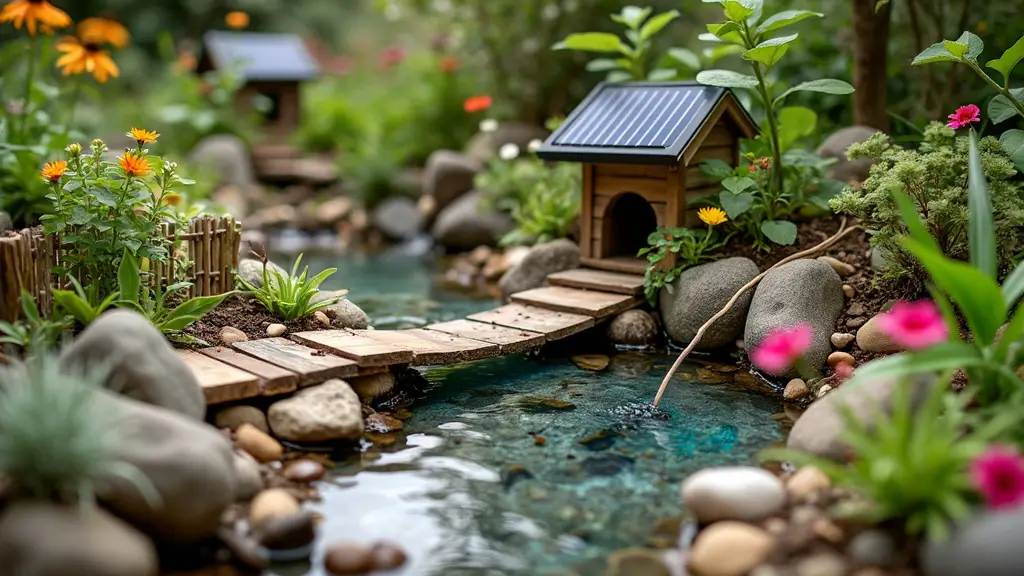
Using sustainable materials contributes to the environment and adds authenticity to your fairy garden. Reclaimed wood can be fashioned into tiny fences or bridges, while natural stones make perfect stepping stones or borders. Driftwood, shells, and pebbles collected from nature walks add personal touches and stories to your garden.
When adding water features, opt for solar-powered pumps to minimize environmental impact. Rainwater harvesting can provide a sustainable water source for your garden, reducing reliance on municipal supplies. Using organic soil and natural fertilizers promotes healthy plant growth without harmful chemicals.
Avoid plastic materials that may deteriorate over time and harm the environment. Instead, choose durable materials like metal, ceramic, or treated wood. When purchasing accessories, look for products made from recycled or sustainable resources.
Crafting Fairy Accessories
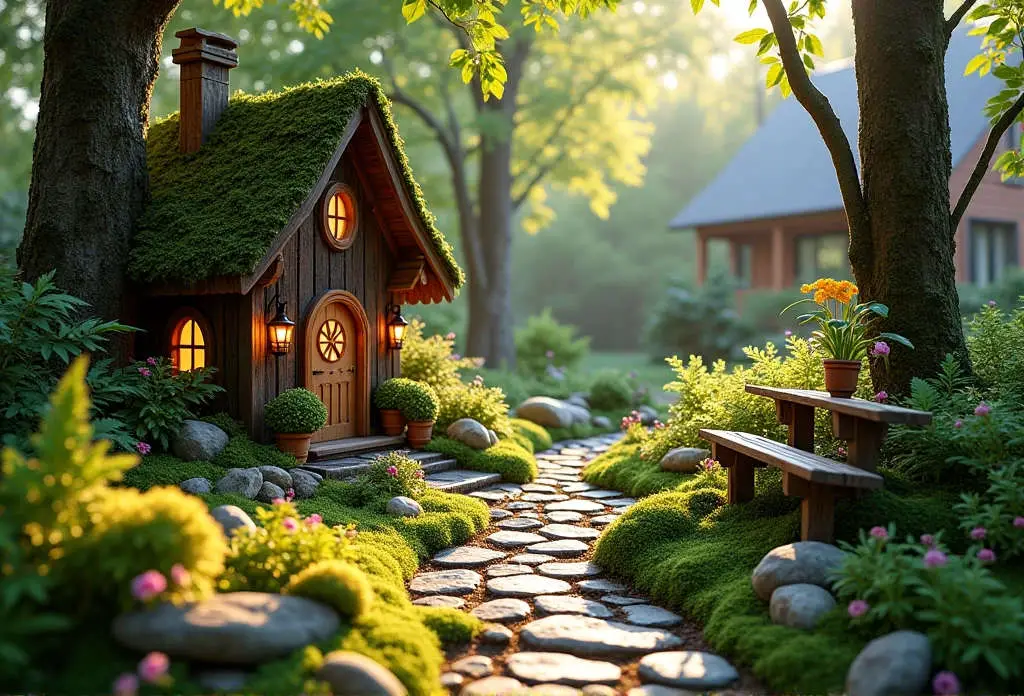
DIY Fairy Houses and Structures
Creating your own fairy houses adds a personal touch to the garden. Start by gathering natural materials like twigs, bark, and acorns. Using a simple hot glue gun, assemble these items into tiny dwellings. Incorporate details like doors made from bark slices or windows framed with small sticks. Adding pinecones, seeds, or dried flowers enhances the rustic charm.
For those who enjoy working with clay, polymer clay offers endless possibilities. Sculpt miniature mushrooms, animals, or fairy figurines that can be baked and painted. This hands-on approach allows you to customize each piece to fit your garden’s theme.
Repurposing household items is another creative avenue. Old teacups can become fairy houses, or broken pottery pieces can be transformed into decorative pathways. Upcycling not only saves money but also adds unique character to your garden.
Sourcing Unique Accessories
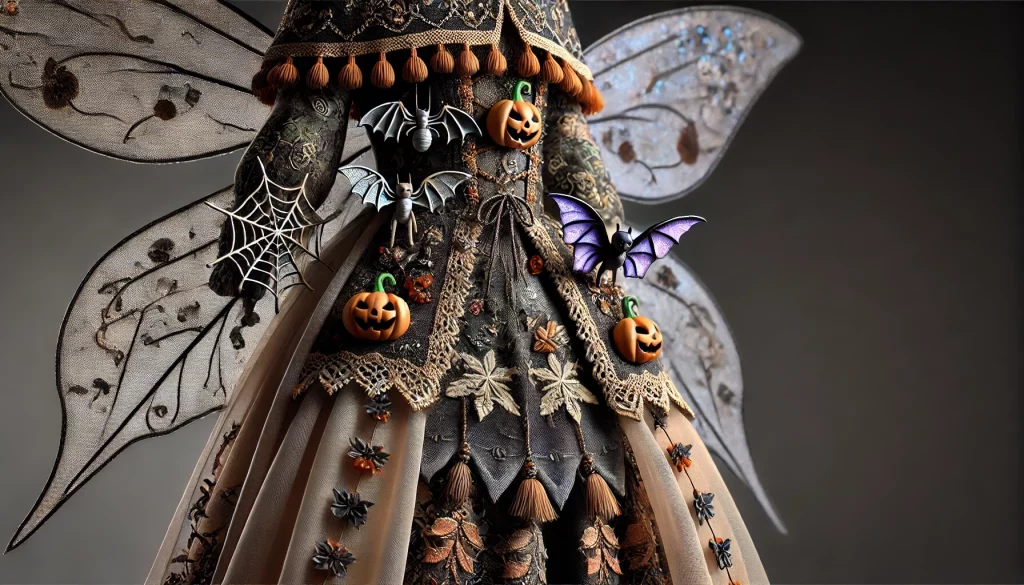
If crafting isn’t your forte, there are plenty of places to find unique accessories. Local craft fairs and artisan shops often feature handmade items that support small businesses. Online marketplaces also offer a wide range of fairy garden supplies, from miniature furniture to delicate figurines.
When purchasing accessories, consider the quality and durability of the items. Weather-resistant materials ensure that your pieces last longer outdoors. Supporting local artisans not only provides you with unique items but also contributes to the community.
Incorporating Technology for a Magical Touch

I. Lighting Solutions
Adding lighting transforms your fairy garden into a nighttime spectacle. Solar-powered fairy lights are energy-efficient and easy to install. Place them along pathways or drape them over miniature structures to create a warm glow. Glow-in-the-dark accents, like pebbles or paint, add an ethereal feel and highlight specific areas after sunset.
For a more dramatic effect, consider installing LED spotlights to illuminate focal points like fairy houses or water features. Fiber optic lights can simulate fireflies or add a sparkling effect to the garden. Combining different lighting techniques creates layers of illumination, enhancing the magical atmosphere.
II. Interactive Elements
For a modern twist, consider incorporating interactive elements. Motion-activated sounds, such as soft chimes or forest noises, can surprise and delight visitors. Devices hidden among the plants can play gentle music or nature sounds when someone approaches.
Augmented reality apps are available that overlay digital fairy figures onto your garden when viewed through a smartphone, enhancing the magical experience. These apps can add animations, stories, or interactive games, especially appealing to tech-savvy visitors and children.
Engaging the Senses
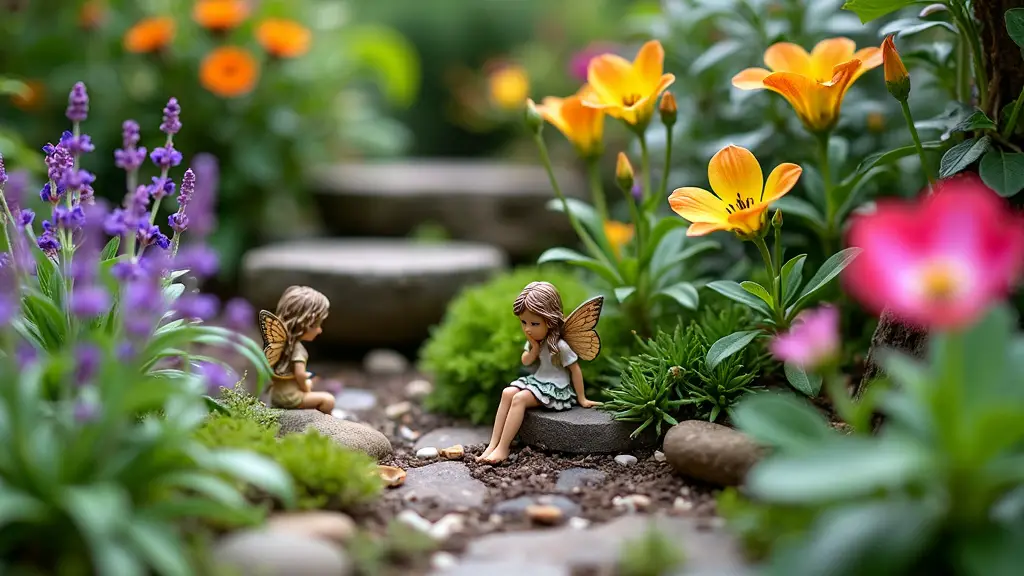
I. Fragrant Plants and Herbs
Incorporating fragrant plants adds another dimension to your fairy garden. Lavender, thyme, and mint not only provide pleasant scents but also attract pollinators. The aroma enhances the atmosphere, making the garden a delightful place to relax. Jasmine and honeysuckle offer sweet fragrances, especially in the evening.
Consider planting night-blooming flowers like evening primrose or moonflower for a sensory experience after dark. Their scents become more pronounced at night, adding to the garden’s allure.
II. Soundscapes
Sound can greatly influence the ambiance of your garden. Wind chimes produce gentle melodies with the breeze, adding to the serene environment. Small water features, like a bubbling fountain or a trickling stream, create soothing sounds that mask urban noise and enhance tranquility.
Adding plants that rustle in the wind, such as ornamental grasses, contributes subtle natural sounds. Including bird feeders encourages birds to visit, bringing their songs to your garden.
III. Textural Elements
Combining different materials introduces tactile interest. Soft mosses, rough bark, and smooth stones invite visitors to touch and explore. Textural variety enriches the sensory experience, making the garden more engaging and immersive.
Including materials like feathers, pinecones, or wool adds unique textures. Encourage visitors to interact with the garden by placing elements at accessible heights. Textural contrasts between plants and accessories create visual interest as well.
Maintaining Your Fairy Garden
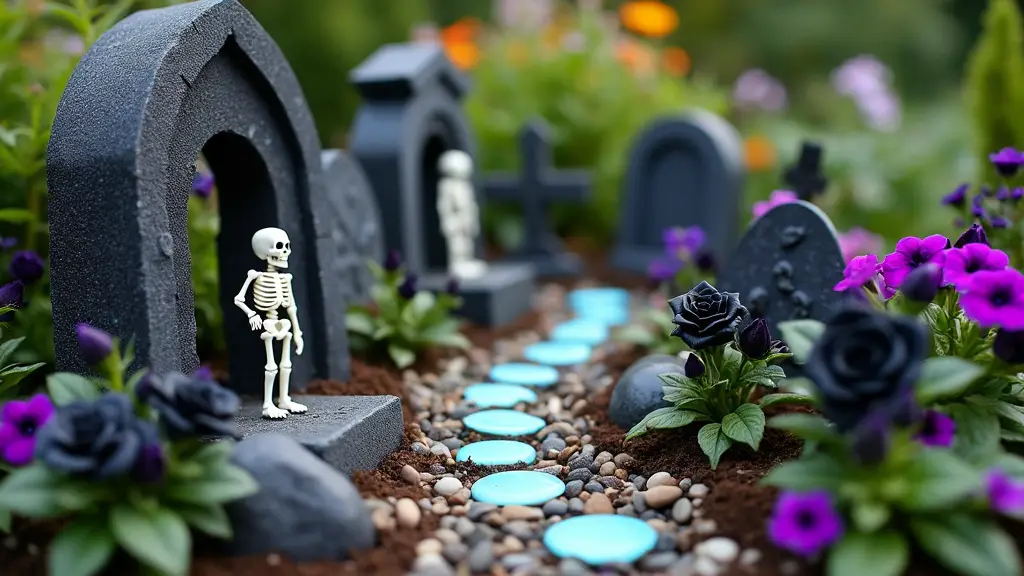
Seasonal Care Tips
Proper maintenance ensures your fairy garden remains enchanting throughout the year. During harsh weather, protect delicate features by bringing them indoors or covering them. In winter, consider adding frost-resistant plants or decorative elements that withstand cold temperatures.
Refreshing plant life by pruning and replacing any that have outgrown their space keeps the garden looking its best. Seasonal decorations can keep the garden feeling fresh and relevant. For example, adding tiny pumpkins in the fall or miniature flowers in the spring celebrates the changing seasons.
Regularly check for weeds or pests that may affect your plants. Using natural pest control methods preserves the garden’s eco-friendly nature. Adjust watering schedules according to the weather, ensuring plants receive adequate moisture without overwatering.
Longevity of Materials
Choosing weather-resistant accessories extends the life of your garden elements. Materials like resin, metal, or treated wood withstand the elements better than untreated counterparts. Regular upkeep, such as cleaning and repairing structures, keeps the garden looking its best.
Applying sealants to wooden accessories can prevent decay. Storing delicate items during extreme weather prolongs their lifespan. Monitoring for signs of wear allows you to address issues before they become significant problems.
Involving the Community and Family
Hosting Garden Tours and Fairy Walks
Sharing your fairy garden with others spreads joy and fosters community connections. Organizing small tours or fairy walks allows neighbors to experience the magic you’ve created. These events can also be tied to charity fundraisers, supporting local causes while bringing people together.
Consider collaborating with local schools or community centers to host workshops or educational events. Offering guided tours with storytelling elements enhances the experience, especially for children. Creating a map or guidebook of your garden adds an interactive component.
Educational Opportunities for Children
Fairy gardens offer excellent opportunities to teach children about nature and conservation. Involving them in the creation process encourages creativity and responsibility. They learn about plant care, the importance of wildlife, and the joy of storytelling through the scenes they help build.
Engaging children in crafting accessories or choosing plants fosters a sense of ownership and pride. Incorporating educational elements, like labeling plants or discussing ecosystems, turns the garden into an outdoor classroom. Encouraging imaginative play in the garden supports cognitive development and emotional well-being.
Time to Start Building Your Fair Garden
Crafting a fairy garden transforms more than just your outdoor space; it enriches daily life with a touch of magic. These miniature worlds inspire imagination and offer a peaceful retreat from the hustle of everyday life. The process allows you to express your creativity, connect with nature, and even strengthen community bonds.
Whether you have a sprawling backyard or a cozy front porch, creating a fairy garden is a rewarding journey that brings joy to both the creator and all who visit. With the guidance provided, you’re well-equipped to begin crafting your own enchanted escape.
